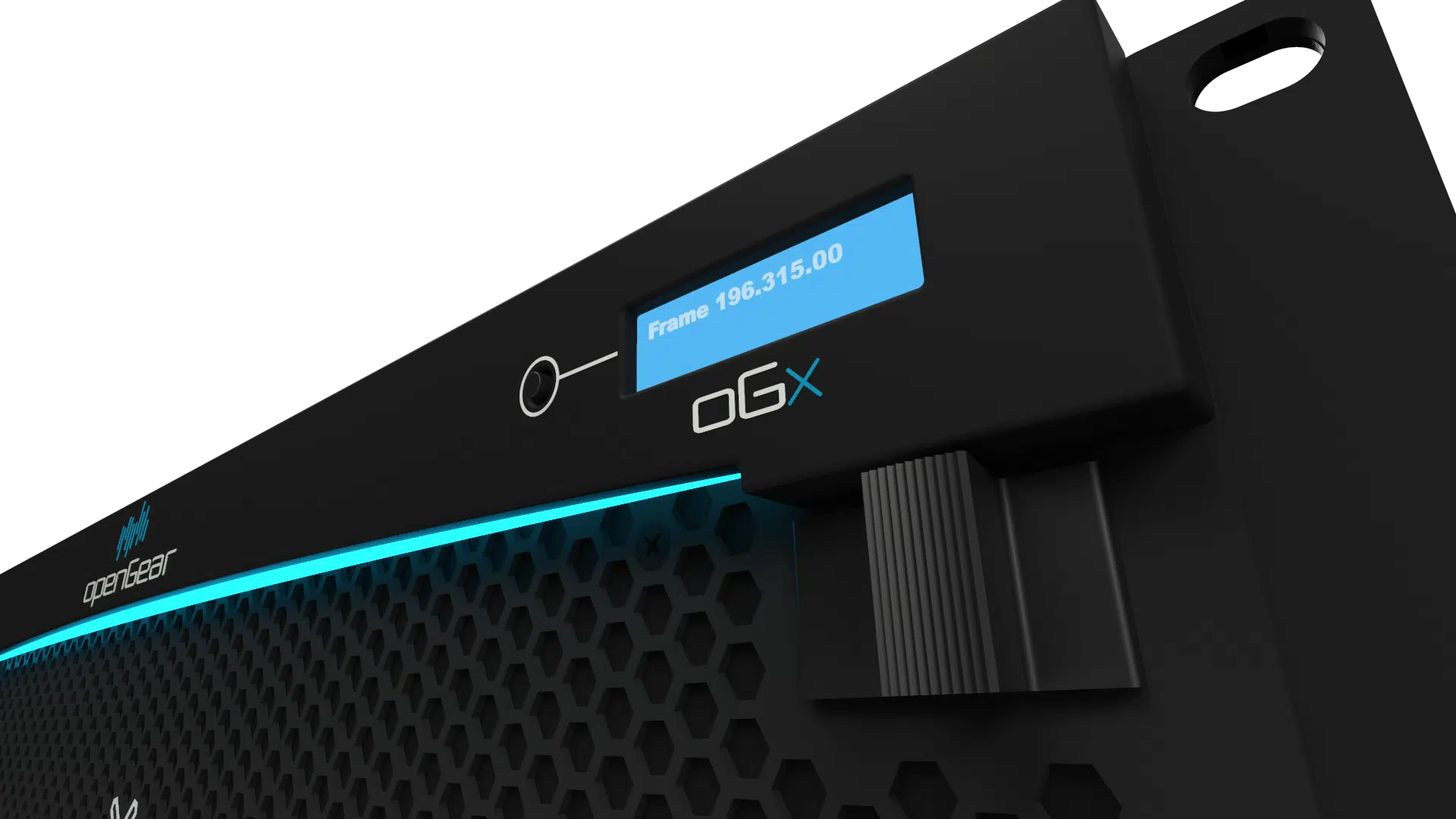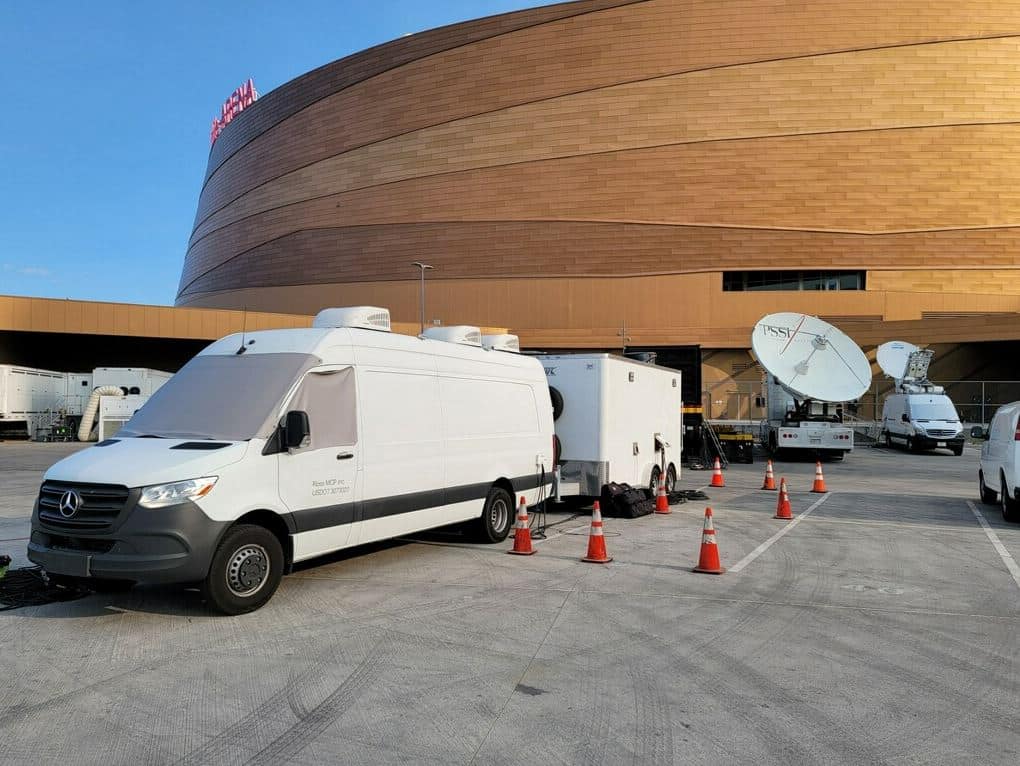May 6, 2024 - Ross Video Team, Technology
18 Years of Innovation: The openGear® Journey


Imagine if roads did not connect. Every time you got off the highway or made a right turn, you’d have to stop and adjust your car for a different surface.
Who would buy a car?
Yet, this lack of connection in live video production is a painful, time-consuming reality. Signal-processing gear from one manufacturer doesn’t connect with equipment from another — often (sadly) intentionally.
In 2006, openGear® changed this entirely.
In 1993, 13 years before its launch, openGear was conceived to solve an unexpected and frustrating problem we experienced developing our first digital signal processing frame — the DFR-8110.
The DFR-8110, which was compatible with our competitors’ frames and cards, was perhaps a victim of its own success.
When we looked to upgrade it to support High-Definition video, we (perhaps naively) thought it would be faster and simpler to create new cards for existing frames. We floated the idea with most of the major industry players. It did not go as expected.
We were repeatedly told that this did not fit with their business models — which were essentially designed to lock a customer into their ecosystem.
That didn’t fit with our values. And it was making life more complicated for the entire industry.
We decided to go beyond, creating our own frame and taking a considerable risk that could transform the industry by making production infrastructure more accessible and flexible for every producer — regardless of their equipment preferences.
It also had the potential to leave us flat on our faces.
The search for like-minded partners began.
And went on.
Eventually, we found two manufacturers who bought into the vision, and the work of building it began.
In 2006, after many years of engineering, networking, and wrangling, Ross Video — alongside Cobalt Digital and Ward-Beck Systems — launched the openGear DFR-8310, a ten-slot frame.
Along with it, we launched DashBoard, a free software program that made integrating and controlling all equipment in the system simple, and accessible from anywhere with a computer monitor.
openGear was an instant hit and was awarded the Gemini Award for outstanding technical achievement by The Academy of Canadian Cinema and Television that same year.
This marked the beginning of openGear’s rise and the end (we hoped) of restrictive video production infrastructure.
Over the next two years, the openGear ecosystem exploded, growing more than ten-fold, and it didn’t stop. By 2014, openGear infrastructure was compatible with technology from over 50 partners, accumulating more monthly.
This resulted in another accolade in 2015 when Ross was awarded an Emmy® for Broadcast Production Distribution and Conversion Equipment, By the end of the following year, the openGear partner network had leapt to more than 100 strong.
A mere decade after our original trio dared to ask, “Why not?” — we could hear the industry shouting back a resounding: “That’s why!”
Our determination bolstered, and we doubled down on both R&D and partner relations.
Today, the openGear ecosystem has nearly 200 partners and is used worldwide. We have shipped over 50,000 frames for uses ranging from traditional broadcasting productions to esports and NFL stadium management.
As modular infrastructure, openGear adapts well to almost any application, and we invest millions of dollars every year to add features and explore new ways to use it based on feedback from customers.
That investment has resulted in over 250 openGear cards created to date. Many of them have been game changers for the industry, such as:
Crafted in Ross’s Iroquois facility, the OGX frame is the core of openGear. It supports continuous, modular expansion with new processing cards making it adaptable to limitless functions, new formats, and I/O standards as they evolve, ensuring that productions can expand and evolve easily whenever they want — and without the restrictions imposed by their existing vendors.

Behind the hardware is the often-unsung software tying it all together: DashBoard.
DashBoard — released the same year as the original openGear frame — is forever-free software that allows users to integrate, monitor, and control their production stack in simple, highly customizable control panels. Users can program custom automated workflows for any equipment in the openGear ecosystem, reducing manual work, minimizing errors, and making production operations more reliable.
The flexibility and usability of this combination has seen DashBoard used well outside of broadcast production, for everything ranging from firework display timing and ignition to unified event venue control, fire alarm systems, and even home cinemas.
Broadcast technology has evolved rapidly over the last five years, most notably around remote and distributed production work. Once again, Ross Video and our openGear partners are pushing the boundaries of what is possible.
At this very moment, graphics and relay operators rely on openGear to work on video feeds and control robotic cameras many miles away. And maybe, in a future not as far away as we once thought, it will be used to power completely virtual studios inside operators’ headsets — from wherever they can find room to sit (not on the official roadmap, but who knows?).
At the center of Ross — and the heart of openGear from day one — is top of the list on our company’s code of ethics:
1) We will always act in our customer’s best interest.
The more complex a system is, the more it benefits from integration — especially when control must take place in the pressure cooker that is a video production environment. That’s why Ross products function so well as stand-alone and part of larger systems.
Thanks to our broad coalition of partners and an expansive selection of cards, openGear is equipped to handle virtually any application you can envision. It’s the versatility of openGear that ensures there’s a solution for every need, no matter how niche or complex.
openGear is a long-term commitment for Ross Video. It was the world’s first modular infrastructure platform open to other manufacturers, and (as other recognizable industry names drift away) may one day be the last one standing.
Ready to explore what openGear can do for your live production? Click here to schedule your complimentary consultation.

Give your clients exceptional broadcast coverage and quality by minimizing Outside Broadcasting (OB) van failure and disruptions. Mobile broadcasting equipment — like any technology — needs proper …

One of the most significant challenges for outside broadcasters is maintaining the same high-quality production standards viewers are accustomed to when filming with a mobile unit. Ross …
We’ll put you in touch with a member of our team to discuss your specific needs.